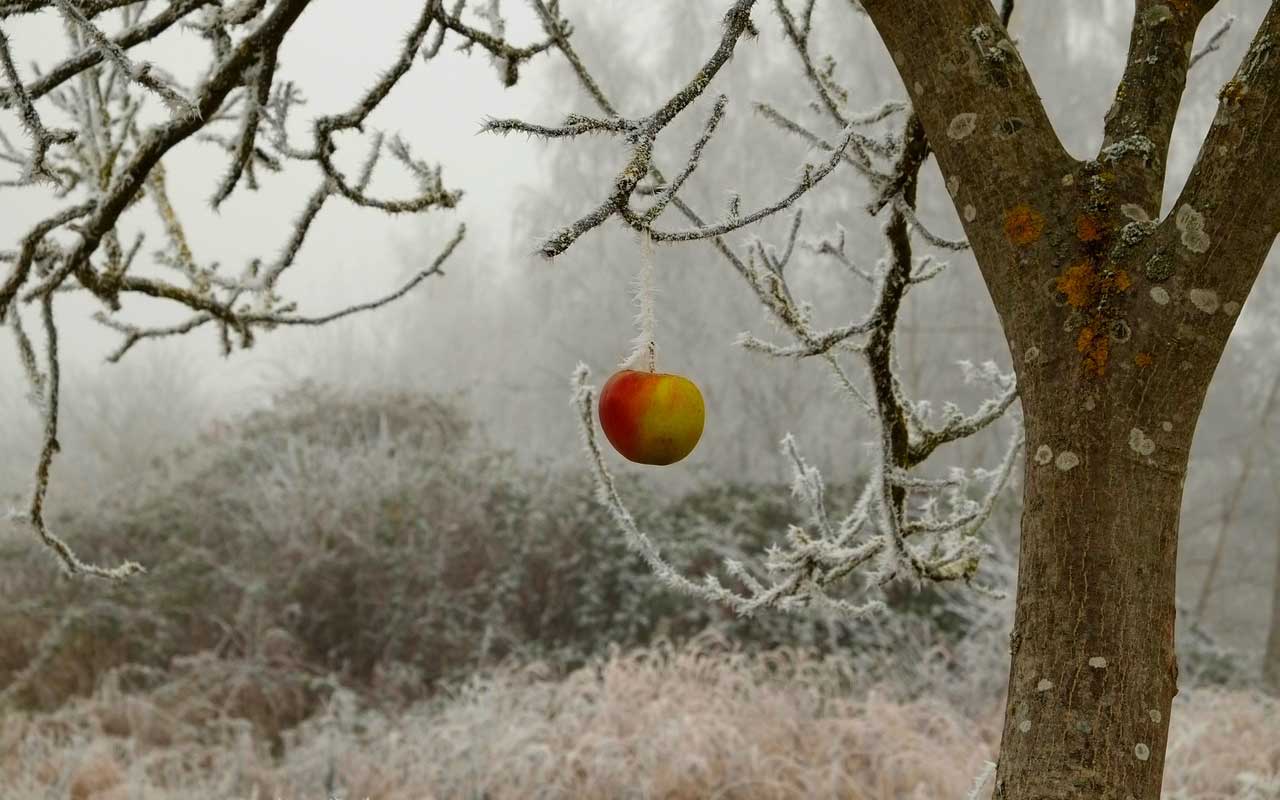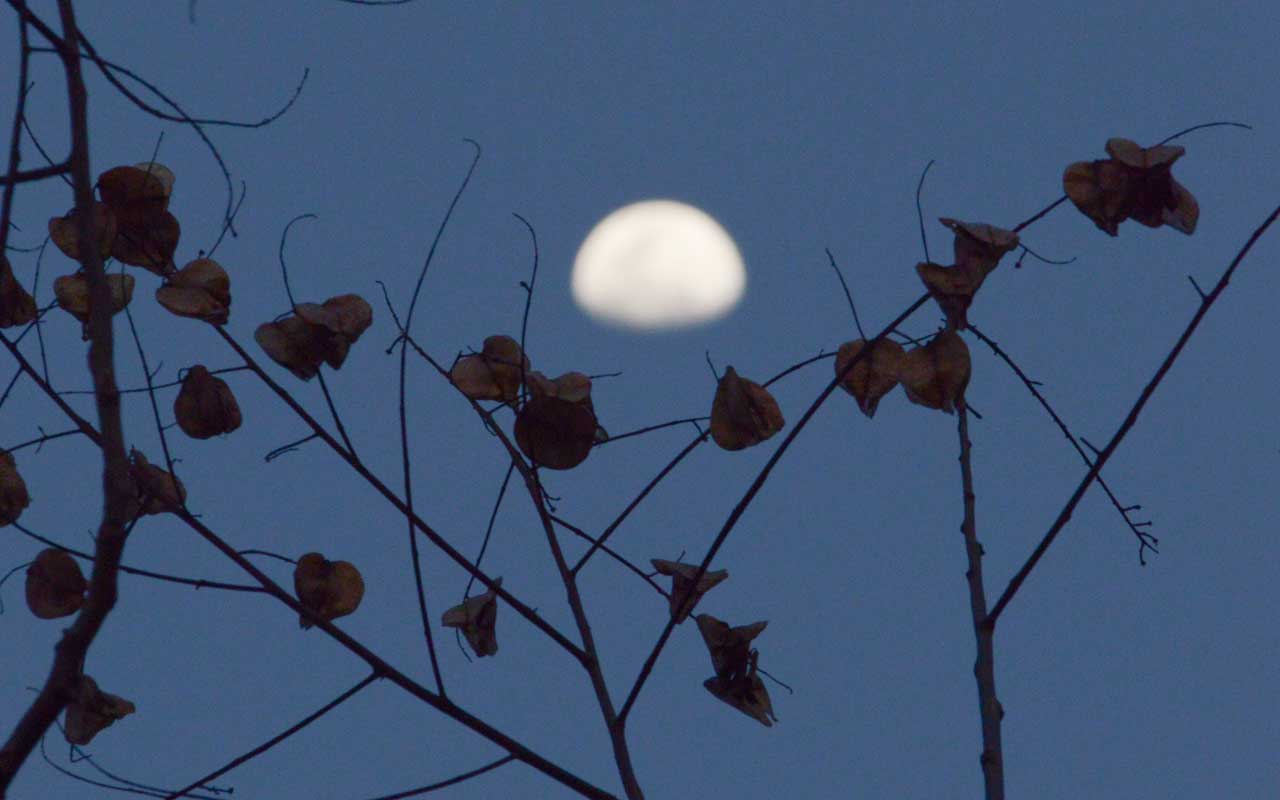Menu

Between November and early March is the best time to prune apple and pear trees. Not only is it much easier to see the branches without the leaves, but it encourages a better crop next season. Pruning helps to protect the tree and to keep it in good shape. Even if you have a tree that looks beyond help – branches a right mess and producing tiny, hard fruits – regular pruning will soon bring it back to form. (I speak from experience: when I moved into my house 16 years ago, the apple tree I inherited was in a very sorry state and hadn’t been pruned for years. With annual pruning, I was soon getting healthy fruits, some of them weighing over 1lb each!)
The following advice is for established apple, pear and quince trees. Younger trees (less than 3 years old) probably won’t need pruning yet. If you have stone-fruit trees (cherries, plums etc) they can be prone to silver leaf if winter pruned; they are better pruned after the flowering season in April/May or after harvesting fruit in August/September.
If you can, prune on a dry day. Not only does it make it a much more enjoyable job but it means damp is less likely to get into the wood, with the possibility of causing infection.
Assemble all the equipment you will need before you start and ensure any blades that you will be using to do the pruning are clean. Pruning saws, secateurs etc should be cleaned with warm, soapy water (and dried thoroughly to prevent rusting). To be really sure, a disinfectant like Jeyes fluid can be sprayed on and left for 20 minutes to kill any potential bugs.
Think about your own safety, too. Solid shoes are essential, and a hat will help to protect your head from falling stems. If you will be working up a ladder, tie it off to something firm or stand it on a solid board to prevent slipping; having someone foot the ladder is better than nothing. And never, ever climb above the ‘pivot’ point where your ladder is resting.
The first thing to look for when pruning are branches that are dead, diseased or damaged. Remove them back to a healthy point, either to a junction with a healthy branch or right back to a trunk.
At this stage, you can be on the lookout for suckers too. A sucker is a stem sprouting from the base of the main trunk, probably from the rootstock that your tree was grafted onto. They will dominate the grafted variety and must be pruned away.
Fruit trees thrive best with an open or goblet-shaped crown; it lets air, light and pollinators in and helps prevent diseases. If you stand close to the trunk and look directly up, you should be able to see the sky rather than a knot of tangled branches.
Start by removing any branches that are growing inwards towards the tree’s centre, and particularly any which cross over each other or rub against each other. If you need to, remove branches that compete with each other growing from the same point; choose to keep the healthiest or strongest that’s growing in the best direction and remove the others back to the branch.
You can also remove any shoots that are growing directly from the main branches. These are known as water-shoots and will be very straight. They are unlikely to be growing in the right direction to want to nurture them.
As you are doing this, remember to stop and stand back from time to time to see how things are shaping up. Remember that you are working towards that ‘goblet’ shaped arrangement and with nice, evenly spread branches.
Now you have got the shape about right, you can focus on ‘heading back’, which simply means reducing the length of some of the outward growing branches. Reducing their lengths means they will be stronger and grow thicker, meaning they will be better able to support fruit with less risk of sagging or snapping. As your tree matures, you may find you need to do this less often.
When we were pruning for shape, we were taking unwanted branches and twigs right back to a healthy branch. This time, we are going to cut part-way along a branch, to reduce previous growth by up to a third. To ensure that the pruned branch remains healthy, make sure you cut just after a healthy, outward facing bud; leaving a cut end with no bud can mean that section dies-back, potentially affecting the whole branch.

When deciding how and where to cut a branch, bear two things in mind. First, any cut surface that sits horizontal could pool with water (risking rot or disease) so an angled cut will be better. Don’t leave little stubby branches; they don’t look good and aren’t likely to have many fruiting buds. Either cut right back to a main branch or don’t bother this year.
We wouldn’t recommend using a ‘wound dressing’ or pruning paint on cut ends of branches. A properly pruned tree (with angled, clean cuts) will seal itself from infections and diseases. If you are particularly concerned about a cut end or even a crack in a tree, consult a tree surgeon or talk to one of our plant experts.
Before February, you might want to think about applying a winter wash or grease band to the trunk of your tree to prevent winter moth caterpillars. We wrote about these in our November 2021 garden jobs article (insert link) or you can chat to our Garden Centre team for further advice.
If your tree has been neglected for years, don’t try to get it back under control in one mammoth pruning session. You are likely to do more harm than good – and potentially cause the tree to send out masses of regrowth in the spring! Plan to do the work over 2 or 3 winters, focusing on the three Ds in year one.
If you need to remove a large branch, try doing it in sections as it will be much easier to handle. Reduce the side branches first, then reduce the length in shorter sections at a time.
Remember that horizontally growing branches tend to carry more fruit than vertical ones; they are usually easier to reach for harvesting, too!
Finally, people sometimes worry about pruning their own fruit tree as they think they might do it wrong or cause damage. As long as you have clean tools and are working safely, you are unlikely to do any damage; indeed, every tree will respond to pruning with new growth. What do we mean by doing it wrong? Potentially, perhaps, that you don’t get any fruit. By pruning in winter, before the tree has started growing again, that is also unlikely. However, as you get to know your tree, you will learn where it grows its fruit (on the new season’s growth or on older wood) so you can adapt your pruning technique a little to suit. In the meantime, if you’re not getting great fruit anyway, you really don’t have much to lose by giving it a go!
For further advice on pruning apple trees in the winter, the RHS website has great tips.
Further reading:
Choosing the right tree for your garden
How to prune your trained fruit tree
How to plant a tree or shrub
Time to think again about conifers?
The joy of autumn leaves
Winter garden maintenance jobs
Hambrooks garden design, landscaping & garden maintenance throughout Hampshire for over 50 years.

